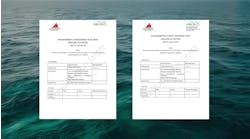Ultima Labs has delivered its 4.75-in. Compact Propagation Resistivity tool (CPR) to the drilling industry.
Resistivity MWD data provides critical information about the formation during the drilling process. When combined with natural gamma ray and directional measurements, energy professionals can quickly evaluate the economic potential of the well and adjust the drilling profile to maximize production, the company says.
With the introduction of the CPR, regional MWD service, providers already providing directional and natural gamma ray measurements now have access to this market. MWD service providers can improve utilization of existing rig site resources by providing this additional service, the company says.
The CPR incorporates technology patented by Ultima Labs that allows the tool to be made shorter than competing devices without sacrificing measurement quality. The CPR provides three transmitter-receiver spacings using two transmitter and three receiver antennas and operates at two frequencies. Multiple spacings and frequencies are important for detailed interpretation of the data. Competing designs require three additional antennas to provide equivalent performance, the company says.
Resistivity measurements are based on phase-difference measurements only to provide the highest accuracy and dynamic range and superior vertical resolution.
The CPR is available in 4.75-in., 6.75-in., and 8.25-in. collar sizes and is rated for 175° C and 20,000 psi bottom hole environments.
The first CPR collars integrate existing customer MWD equipment. In this application, the customer’s MWD system is retrievable and uses both a mud pulse telemetry system at the top of the MWD probe as well as electromagnetic telemetry.
The modular design of the CPR allows the resistivity measurement to be adapted to existing MWD systems, including configurations with the mud pulse telemetry system at the bottom, the company says.




